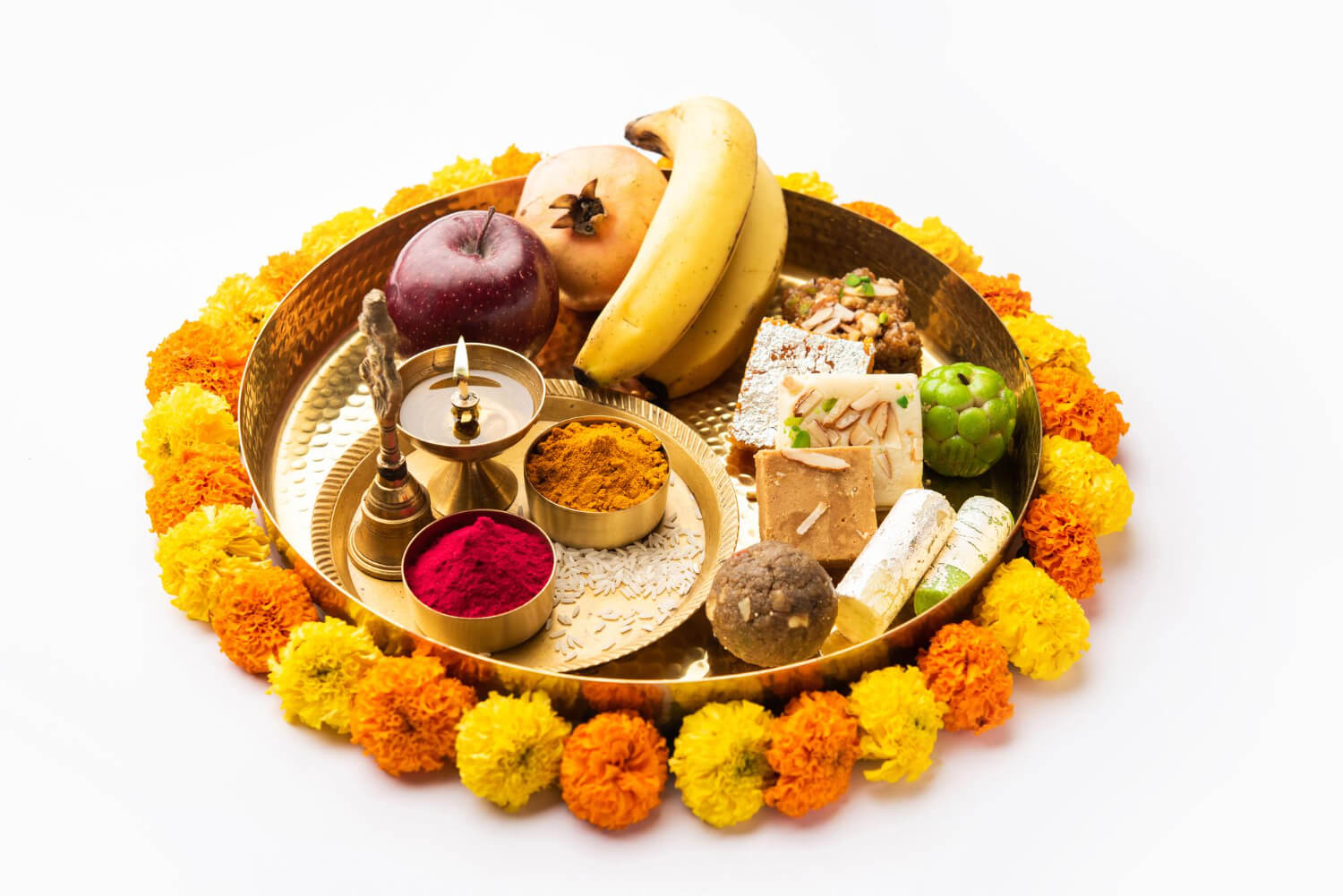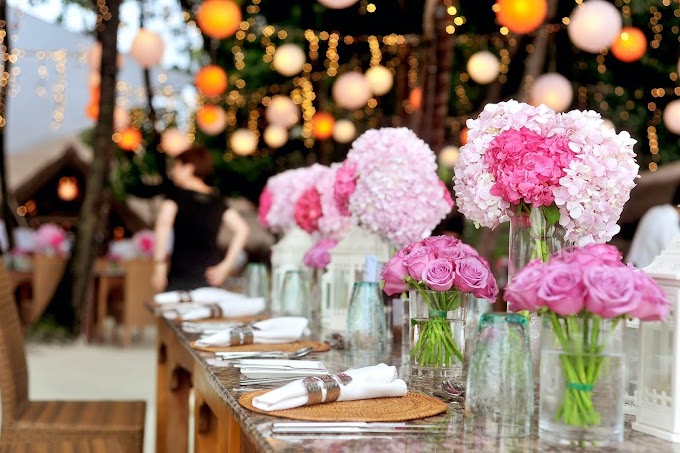Performing pooja is a daily ritual in almost all Hindu households. It’s a divine activity where you worship God and be thankful for the life you have. Some people also perform pooja to remove negative thoughts and bring peace to the mind.
So, what is pooja and how is it performed? If you’d like to know, read on to find out the right way to perform a pooja.
Pooja is a ceremonial worship derived from Dravidian ‘pu’ meaning “flower”. In Sankrit the word puja means homage, adoration or worship. You worship God by offering flowers, and fruits, to an image or statue of a God.
Process of doing Pooja
Set-up the Altar
Pooja Mandir, where all the God statues and images are placed, should be neat and clean. Always remember to clean the altar after you have a bath and wear washed clothes. When you make sure to clean the place, decorate the floor by applying rangoli using rice flour, grains, legumes, or flowers. Also, decorate the images of God by placing flowers and garlands. Now the altar is ready for you to worship.Bathing God
After setting up the altar, you should bathe God by purified water. In some cultures, it is done three times. It is then said that the idols are ready to be worshipped.Lighting Diyas
Diyas are the mandatory pooja items in the pooja ceremony. You should only use diyas made of brass, clay and silver to lighten the altar. Any other metal is said to attract negative energies so refrain from using steel or iron items for diyas.And as for the oil, you should either use ghee, sesame or coconut oil and shouldn’t use cooking oils like olive or sunflower oil. Lastly, lighten the diyas using a wick.And then you should join together your palms near your heart and send a prayer to god.Incense and lamp
Incense (Dhoopam) sticks are lightened to please the God. It’s also one of the mandatory steps in the daily poojas. There are various incense sticks available in the market with different aromas. Choose the one to your liking and you can be pleased with the smell embracing the altar.Circumambulation
Called Pradakshinam in the traditional language, you should move slowly in the clockwise direction and repeat it three times while your hands are in Namaskara posture. It’s not mandatory in the daily pooja, however, you should do it while doing special poojas or vratham.Prostration
You should then pray to the God by lying on the ground face first and your hands stretched in the Namaskara position above your head. Usually, it is done by men whereas women simply kneel down before the deity.Offering fresh food and flowers
Offering food to God is also one of the mandatory steps that you should perform in a ceremony. Usually, sweet items are made using ghee, rice, and jaggery and are offered to God in either banana leaf or silver and brass utensils.Aarti
Aarti is considered the final step in the ceremony which is the waning of lighted lamps before an image of a God. In households, you can do it on your own whereas, in temples, a priest will perform the aarti.Pooja ceremonies are usually performed by the head of the family in Indian households. And in temples, you can see priests (Brahmins) performing the rituals by chanting the Vedic mantras and shlokas.And there are also some people who do special pooja at home like vratham and Homam. In such cases, priests are called to the house and the whole family is seated before God while the priest performs the ritual.Performing pooja is one of the best ways to feel connected to divine power. Knowing the right method and using the correct utensils will allow you to emit positive energies around your home. Involve your whole family during daily rituals so that all members actively participate in worshipping god. You can even involve your kids by giving them chores like cleaning and decorating the altar.












 Erika Rhein, the contributing author and the professional blogger by profession. With years of experience, I now focus on writing blogs on varied niches. Being a research enthusiast, I like to provide my readers with the useful and informative articles on the different topics they are looking for. I aim to create a difference through my writing.
Erika Rhein, the contributing author and the professional blogger by profession. With years of experience, I now focus on writing blogs on varied niches. Being a research enthusiast, I like to provide my readers with the useful and informative articles on the different topics they are looking for. I aim to create a difference through my writing.
0 Comments